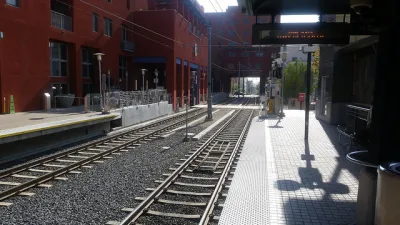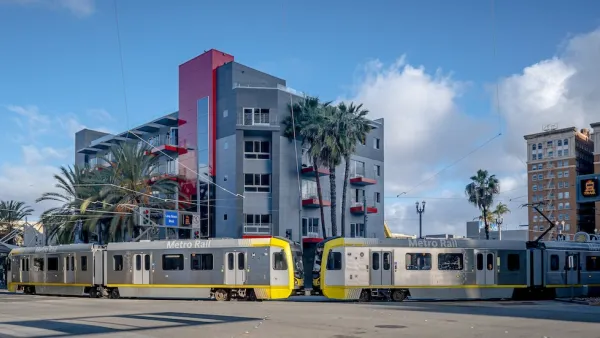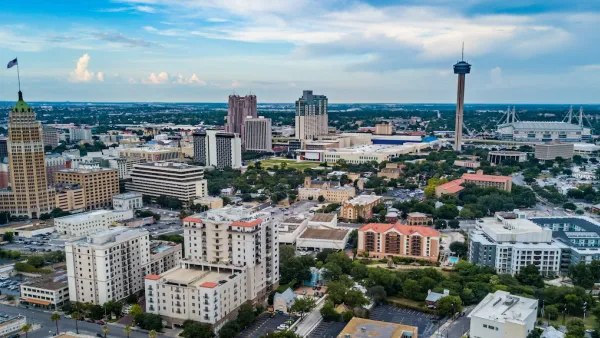Transit providers are often major landowners in their communities, controlling underutilized properties like park-and-ride lots or storage and maintenance facilities. These sites are also opportunities to provide desperately needed affordable housing

Public transit providers are struggling to make ends meet. Many agencies are in a vicious cycle: the increased use of ride-hailing and bike-sharing services means fewer riders, creating a decline in revenue, which, along with the chronic lack of funding, results in further service cuts. It doesn’t help that in many communities, an affordable housing shortage has displaced lower-income riders who typically rely on transit.
Phil Washington of Los Angeles Metro once said, “I don’t want to build new tracks, I want to make sure people can live near our transit.” It is this same spirit that is behind affordable housing advocates finding new allies—in public transit agencies.
Los Angeles’ Metro transit agency is one several around the nation that has focused on transit-oriented development and either partnered with affordable housing developers or promoted affordable housing near its stations. Since 2016, Metro has distributed $9 million in low-interest rate loans for affordable housing on land adjacent to its stations as part of its Joint Development Program. Like other agencies, Metro also has an explicit affordable housing policy, requiring that at least 35 percent of all housing units developed on its properties be set aside for households making less than 60 percent of the area median income, or roughly $56,000 per year. The program has generated more than 700 subsidized affordable units near the agency’s rapidly expanding system, with another 162 affordable units in construction, and almost 600 more in negotiation.
It turns out that transit agencies have a lot to gain from affordable housing. Transit providers are often major landowners in their communities, controlling underutilized properties like park-and-ride lots or leftover pieces of land from the construction of a new project, or storage and maintenance facilities. These sites are also opportunities to provide desperately needed affordable housing, which in turn creates increased ridership from residents and visitors, as well as additional revenue. For instance . . .
FULL STORY: Affordable Housing on Transit Land

Analysis: Cybertruck Fatality Rate Far Exceeds That of Ford Pinto
The Tesla Cybertruck was recalled seven times last year.

National Parks Layoffs Will Cause Communities to Lose Billions
Thousands of essential park workers were laid off this week, just before the busy spring break season.

Retro-silient?: America’s First “Eco-burb,” The Woodlands Turns 50
A master-planned community north of Houston offers lessons on green infrastructure and resilient design, but falls short of its founder’s lofty affordability and walkability goals.

Test News Post 1
This is a summary

Analysis: Cybertruck Fatality Rate Far Exceeds That of Ford Pinto
The Tesla Cybertruck was recalled seven times last year.

Test News Headline 46
Test for the image on the front page.
Urban Design for Planners 1: Software Tools
This six-course series explores essential urban design concepts using open source software and equips planners with the tools they need to participate fully in the urban design process.
Planning for Universal Design
Learn the tools for implementing Universal Design in planning regulations.
EMC Planning Group, Inc.
Planetizen
Planetizen
Mpact (formerly Rail~Volution)
Great Falls Development Authority, Inc.
HUDs Office of Policy Development and Research
NYU Wagner Graduate School of Public Service




























